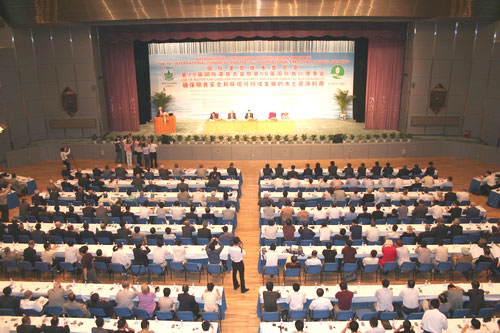
Surface irrigation the most common form of irrigationt hroughout the world that has been practiced in many areas virtually unchanged for thousands of yearsincludes a group of application techniques.Surface irrigation comes in three major types: level basin, furrow and border strip.
In surface irrigation, also termed as flood irrigation, water is applied and distributed over the soil surface by gravity,implying that the water distribution is uncontrolled. The average depth of water that can be delivered on field cannot be less than 75-100 mm. The total crop requirement per rotation would be 75-100 mm plus the water lost due to deep percolation. The process of surface irrigation can be said to include four phases: advance phase; storage phase; depletion phase; and recession phase. If there is long duration between two rotations, there is likelihood of water stress resulting in wilting point during the recession stage. Large difference in water that crops require and the flow irrigation system actually delivers results in low field water application efficiency.
Surface irrigation is often associated with undermining productivity and environmental sustainability. Over-irrigation may cause water to move below the root zone resulting in rising water tables. In regions with naturally occurring saline soil layers or saline aquifers, these rising water tables may bring salt up into the root zone leading to problems of salinity.Waterlogging can cause the plant to shut down delaying further growth until sufficient water drains from the rootzone.
Canal management rotation period, i.e., frequency of irrigation cannot be changed frequently during crop season to match with total crop requirement during each rotation from sowing to maturity. Further different crops grown in the command have different sowing time, crop duration and daily water requirement. All these constraints preclude evolving a tailor made water delivery schedule.These limitations
Many management practices, under the right conditions, can be followed to obviate some of the negative aspects of flow irrigation.Some of the practices grouped under this name involve a significant degree of management (for example surge irrigation). Water applied in each rotation can be controlled if the field are levelled precisely using laser techniques.
Related items you may like




















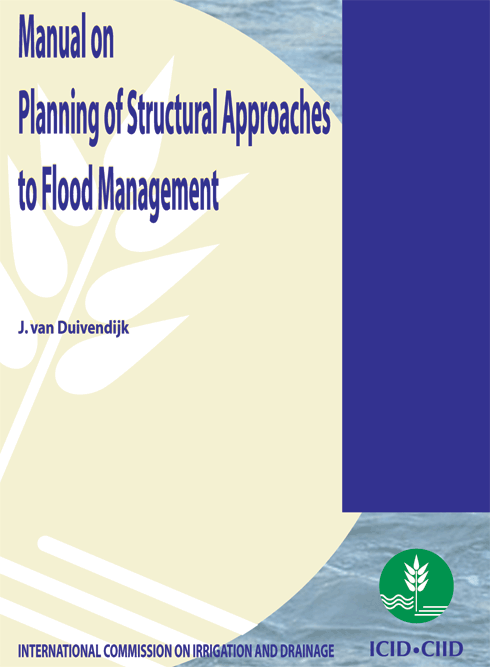


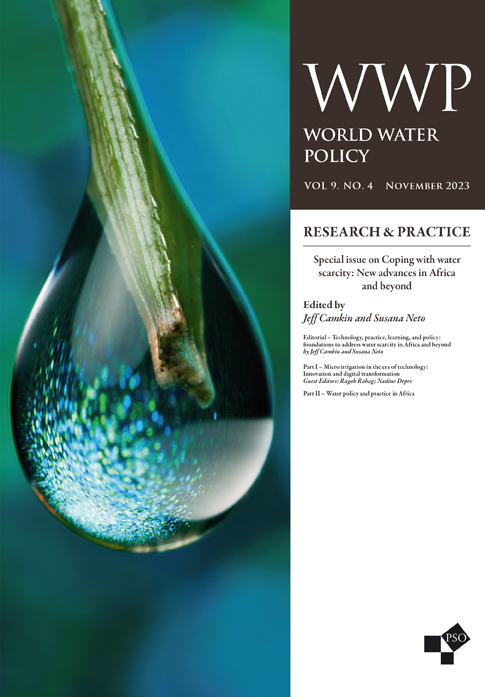
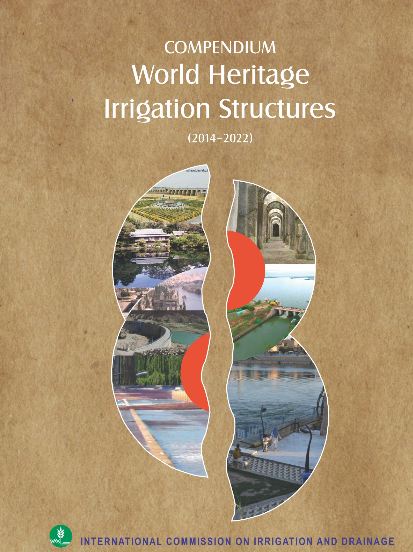







































































































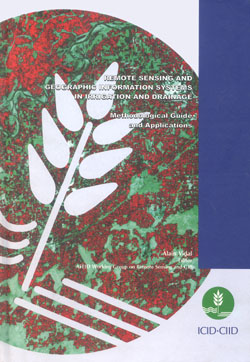



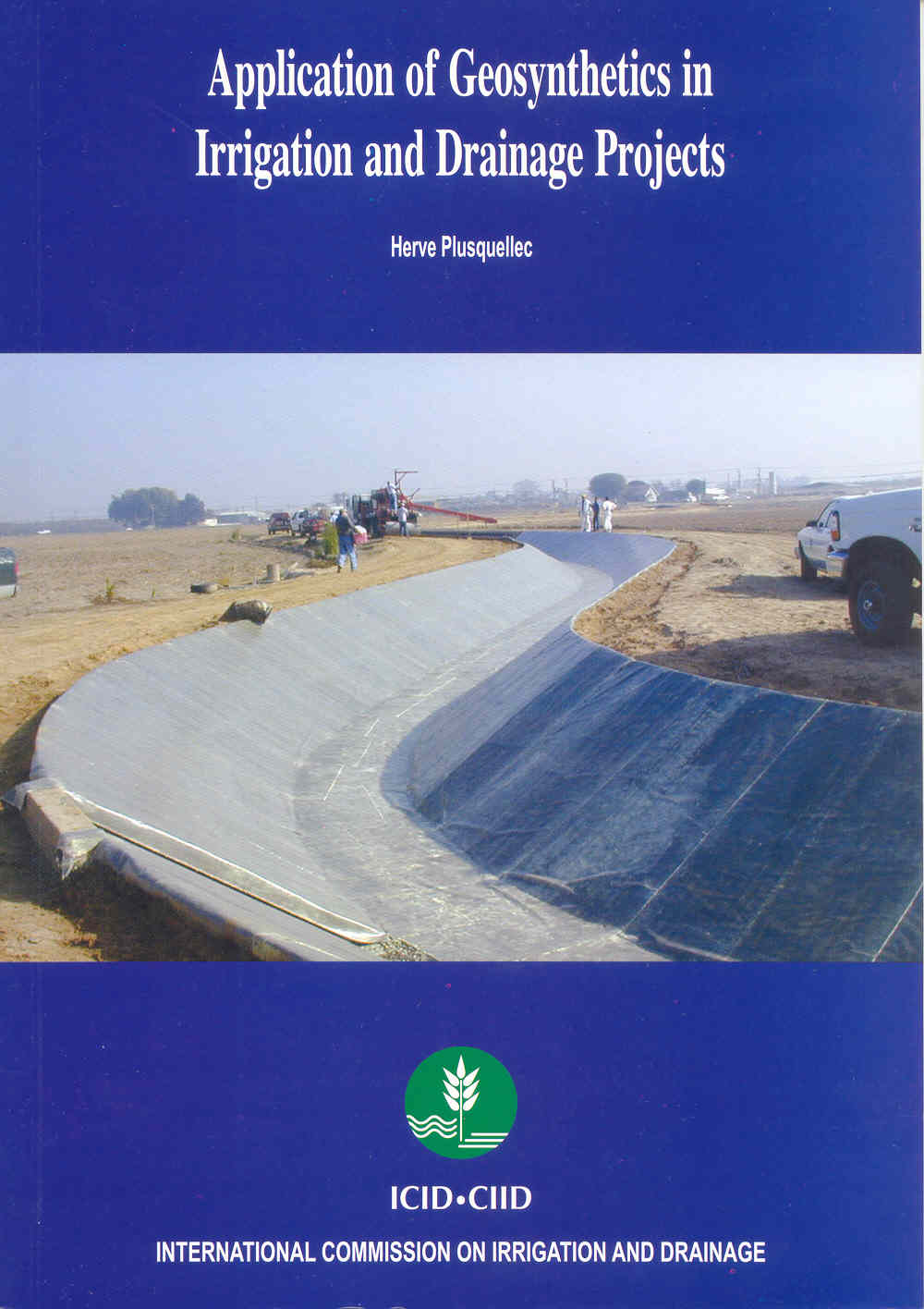

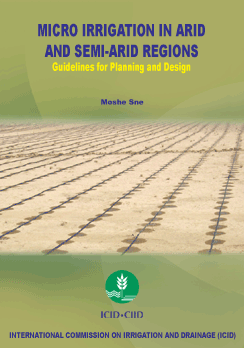
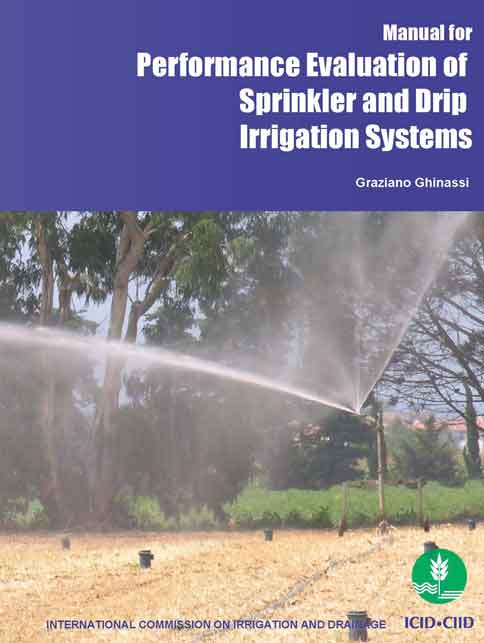



Irrigation
Sources of Irrigation
Irrigation History +
Sources of Irrigation +
IMPROVING SOIL MOISTURE +
Ponds +
Tanks +
Diversion Weirs +
Dams and Reservoirs +
Groundwater +
Conjunctive Water Use +
Wastewater +
Poor Quality Water +
Application of Irrigation water
Canal Irrigation +
Flood Irrigation +
Deficit Irrigation +
Supplemental Irrigation +
Sprinkler Irrigation +
Drip Irrigation +
Lift Irrigation +
Centre Pivot Irrigation +
Tidal Irrigation +
Micro-Irrigation Technologies for Small Holders +
Automatic Irrigation Systems +
Pressurized Irrigation +
Irrigation in Viticulture +
Purpose of Irrigation
Instruments and implements of Irrigation
Pumps +
Centrifugal Pumps +
Submersible Pumps +
Turbine and Jet Pumps +
Conveying Pipes +
Sprinklers +
Drippers +
Canal Automation Systems +
Irrigation Management
Economics of Irrigation System +
I&D System Types +
I&D Investment Functions +
I&D Management Issues +
Participatory I&D Management +
Equity in Irrigation +
Irrigation Services +
Irrigation and environment
Pollution and Irrigation +
Irrigation and Climate Resilience +
Environmental Aspects of Irrigation +
Environmental Impacts of Irrigation +
Green Lawn Irrigation +
Safe Use of Waste Water in Irrigation +
Organic Agriculture +
Soil Health +
Soil Health Management +
Quality of Irrigation Water +
Capacity Development
Drainage
Drainage Types and Systems
Agricultural Drainage +
Field Drainage systems +
Canal Irrigation and Drainage +
Surface Drainage Systems +
Subsurface Drainage +
Mole Drainage +
Bio-Drainage +
Regional Bio-Drainage +
Drainage Issues
- Annual-flood peak series
- Design flood hydrograph, Inflow Design Flood
- Flash flood
- Flood stage
- Maximum probable flood
- N-Year flood
- Design flood
- Sharp-crested flood
- Sheet flood
- Flood frequency
- Flood wave
- Flood flanking
- Flood tide, or Rising tide
- Duration of tide, Duration of ebb tide Duration of flood tide
- Tidal flood current
- Tidal flood interval
- Tidal flood strength
- Flood control reservoir, or Single-purpose flood control reservoir
- Flood control storage
- Flood storage
- Flood surcharge, or Surcharge
- Spillway design flood
- Flood gate
- Double opposed gates, Flood tide gate, Ebb tide gate
- Irrigation pipe aqueduct, Pipe aqueduct, Pipe flume
- Syphon, Inverted siphon, Irrigation syphon, Canal syphon, Syphon superpassage
- Lift irrigation area, or Lift area
- Continuous-flow irrigation
- Night-storage irrigation system
- Intermittent-flow irrigation system
- Irrigation return flow
- Farm irrigation structures
- Flood
- Flood alleviation
- Flood control
- Flood control project, Flood mitigation project, or Flood protection scheme
- Flood control works, or Flood protection works
- Flood hazard zone
- Flooding, or Inundation
- Flood management
- Floodplain encroachment
- Floodplain, or Flood Land
- Floodplain fringe, or Floodway fringe
- Floodplain preservation
- Flood plane
- Partial flood protection
- Flood risk
- Flood zones
- Natural floodplain
- River floodplain swamp
- Washland, or Floodplain
- Washland storage, or Floodplain storage
- Nonstructural measures of flood management
- Structural measures of flood management
- Economic effectiveness of a flood management system
- Flood enhancement
- Primary flooding zone
- Secondary flooding zone
- Collective irrigation system
- Individual irrigation system
- Perennial irrigation
- Seasonal irrigation
- Supplemental irrigation
- Systematic irrigation
- Flow irrigation, or Gravity irrigation
- Pumping irrigation
- Inundation irrigation
- Irrigation from a storage reservoir
- Irrigation from groundwater
- Irrigation by flood water spreading
- Sailab irrigation (a term used in India and Pakistan)
- Micro basin irrigation
- Irrigation by spreading
- Irrigation
- Irrigation interval
- Irrigation dose
- Ideal irrigation interval
- Irrigation season
- Fall irrigation (USA)
- Winter irrigation (USA)
- Early irrigation (USA)
- Sub-irrigation
- Overirrigation
- Irrigation canals
- Surface irrigation
- Flood irrigation
- Basin method of irrigation, or Irrigation by beds
- Flush irrigation
- Wild flooding, or Free flooding
- Spate irrigation
- Controlled flooding
- Border irrigation, or Border method
- Flooding from ditches, or (contour ditch irrigation)
- Corrugation irrigation
- Furrow irrigation
- Surge irrigation
- Duration of irrigation
- Secondary flow, Two discharge, or Cutback irrigation
- Primary flow irrigation (single discharge)
- Wave irrigation
- Irrigation through buried drains, Irrigation-drainage, or Vallenhove process
- Irrigation by nappe control, or Ramspol process
- Selection of irrigation parameters
- Sprinkler irrigation
- Irrigation terminal
- Irrigation device
- Perforated pipe sprinkler irrigation
- Irrigation sprinkler machine
- Centre pivot irrigation
- Lateral-move irrigation machine sprinkler method
- Solid set irrigation
- Piloting of irrigation
- Irrigation cycle
- Micro-irrigation, Localized irrigation, Drip irrigation, Trickle irrigation
- Mobile micro-irrigation
- Pulse irrigation
- Surface drip irrigation
- Buried drip irrigation
- Drip irrigation functioning by propulsions
- Micro-irrigation network
- Micro-irrigation nozzle-line
- Irrigation dose
- Semi-automatic control (of irrigation)
- Micro-irrigation system with hydraulic sequential operation
- Automatic control (of irrigation)
- Porous wall microirrigation tubing
- Proportional irrigation pump
- Irrigation water
- Irrigation water requirement, Irrigation need
- Net irrigation requirement, Farm delivery requirement, or Delta at farm
- Crop irrigation requirement
- Diversion requirement, Gross irrigation requirement, or Delta at head of main canal
- Optimum irrigation requirements
- Irrigation efficiency, Farm irrigation efficiency, Farm delivery efficiency, Water conveyance and delivery efficiency, or Overall efficiency
- Irrigation water-requirement
- Subirrigation
- Surge irrigation
- Irrigation water use efficiency
- Unit irrigation efficiency
- Economic efficiency of irrigation
- Irrigation efficiency
- Agronomic efficiency of irrigation or Agronomic productivity of irrigation
- Degree of durability of irrigation
- Programmed irrigation
- Fully automatic irrigation system
- Irrigation development project or system
- Irrigation
- Surface irrigation
- Wild flooding
- Basin Irrigation
- Overhead irrigation
- Sub‑irrigation
- Microirrigation
- Trickle irrigation
- Drip irrigation
- Total irrigation
- Supplemental irrigation
- Preplant irrigation
- Organic irrigation
- Peak flood, Momentary flood peak, or Maximum intensity of flood
- Extraordinary flood
- Percentage frequency of a given flood
- Land phase of flood
- Floodplain
- Flood axis
- Flood zones
- Flood control
- Flood abatement
- Base Flood Elevation (BFE)
- Flood cropping
- Flood risk
- Fluvial flooding
- Groundwater flooding
- Ocean flooding
- Pluvial flooding
- Sewer flooding
- Urban flooding
- Basic-stage flood, or Floods above a base
- Broad-crested flood
- Catastrophic flood
- Daily flood peak
- Design flood
- 100-year flood (one-hundred year flood)
- 500-year flood
- Base Flood
- Chance flood
- Flood
- Flood flow frequency
- Flooding
- Design flood hydrograph
- Earthquake flood, or Tsunami
- Empirical flood formula
- Flood probability maps
- Extreme flood, or Extraordinary flood
- Flash flood
- Flood attenuation effect of a reservoir
- Flood event
- Flood event anxiety
- Flood crest, Flood peak, or Flood summit
- Flooded area
- Flood forecasting
- Flood frequency
- Flood frequency analysis
- Flood frequency curve
- Flood frequency method
- Flood frequency region
- Flood hazard
- Flood hazard area
- Flood hydrograph
- Flood hydrology
- Flood incidence, or Flood probability
- Flood index
- Flood magnitude, or Flood size
- Flood map, Flood risk map, or Floodplain map
- Flood mark, High watermark, or Rack mark
- Flood meter, or Water level gauge
- Flood parameter
- Floodplain mapping
- Flood probability
- Flood regime, or Flooding regime
- Flood routing
- Flood runoff
- Flood series
- Flood severity
- Flood spreading
- Flood stage, or Flood level
- Flood tide
- Flood tide current
- Flood volume
- Monthly flood
- N-Year flood
- Mean annual flood
- Flood wave
- Ice jam flood
- Initial flood
- Maximum flood
- Probable maximum flood, or Maximum possible flood
- Sharp-crested flood
- Sheet flood
- Snow-melt flood
- By-pass floodway
- Floodway, By-pass floodway, Flood diversion channel, or Flood relief channel
- Flood wall
- Levee, Floodwall
- Hydraulic effectiveness of flood control systems
- Inter-basin floodway
- Parallel floodway
- Flood bed
- Flood control works
- Flood channel
- Flood fringe
- Flood gate
- Flood levee, Levee, Main Levee, Embankment, Stop bank, Dyke, Dike, Summer dike, Confinement dike, Ring dike, or Bund
- Freeboard, Net freeboard, Dry freeboard, or Flood freeboard
- Design flood level
- Flood control reservoir
- Flood control storage
- Floodplain storage
- Flood storage basin
- Spillway design flood
- Dry flood-proofing
- Emergency flood-proofing
- Flood adaptation
- Flood assistance
- Flood early warning system
- Flood forecasting and warning
- Flood fighting
- Floodplain acquisition
- Floodplain land use planning
- Floodplain management
- Flood management
- Flood risk management
- Floodplain regulations
- Floodplain relocation
- Flood-proofing
- Flood resistant crops
- Flood insurance rate map (FIRM)
- Flood insurance study (FIS)
- Flood recession agriculture
- Floodway fringe
- Floodplain zoning, Flood zoning, or Zoning
- Flood warning
- Permanent flood-proofing
- Wet flood-proofing
- Conjunctive irrigation planning
- Irrigation project
- Flood control project, Flood mitigation project
- Irrigation potential
- Assessment of irrigation charges
- Irrigation cess
- Water rate, Water charge, Irrigation rate, or Irrigation assessment
- Primary benefits, Primary effects, Direct irrigation benefits, or Direct irrigation effects
- Secondary benefits, Secondary effects, Indirect irrigation benefits, or Indirect irrigation effects
- Flood control benefits, Flood control direct benefits, Flood control indirect benefits
- Economic value of unit of irrigation water
- Revenue value of a unit of irrigation water







